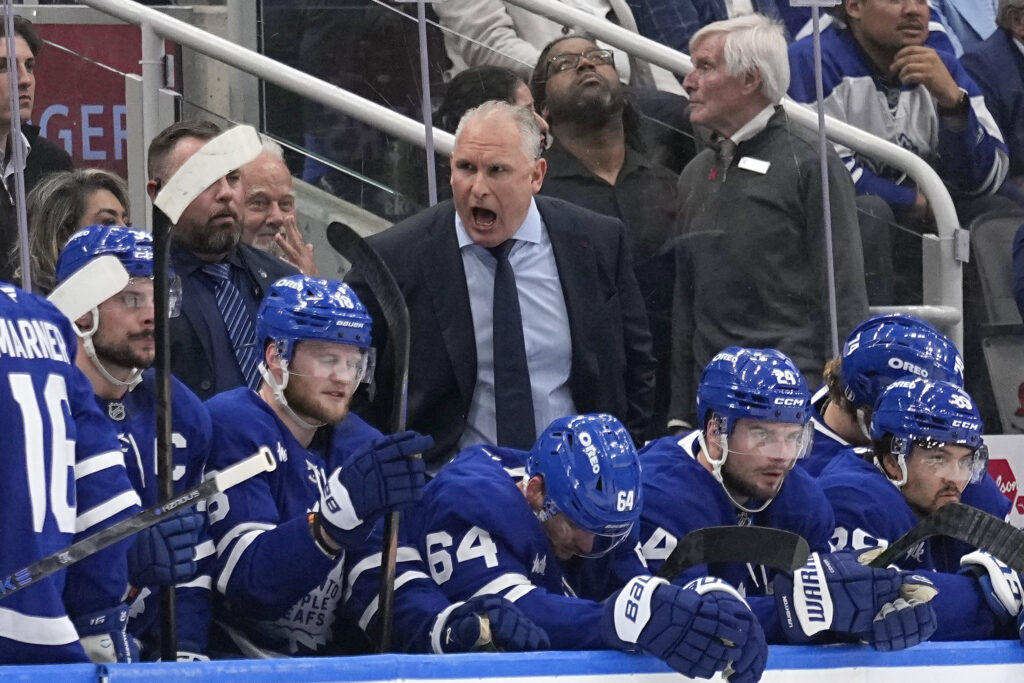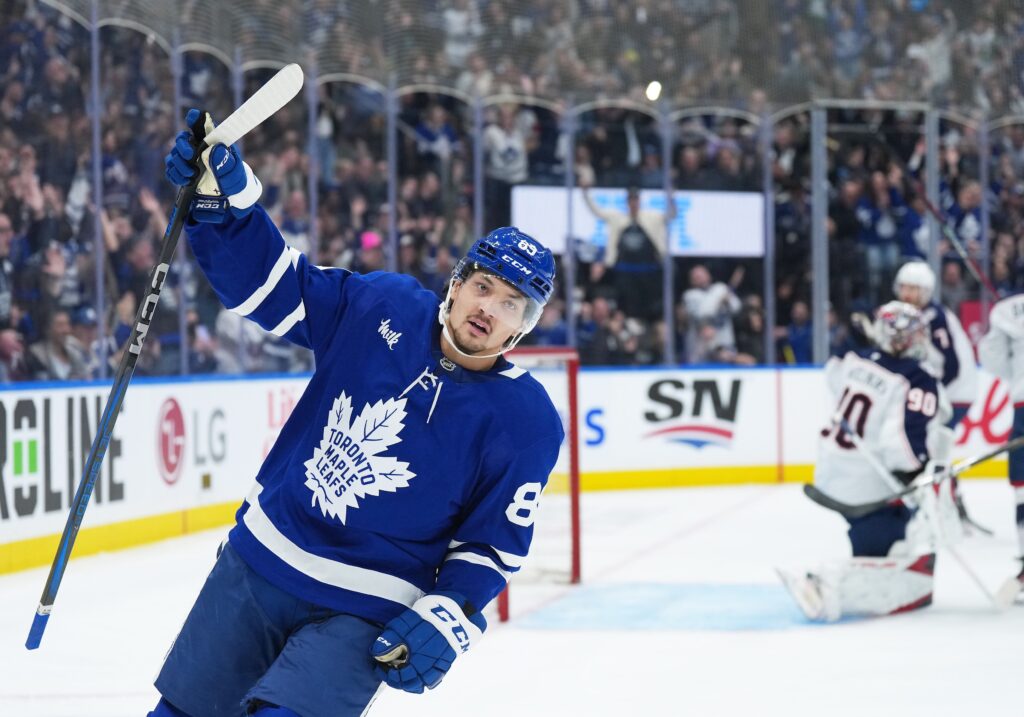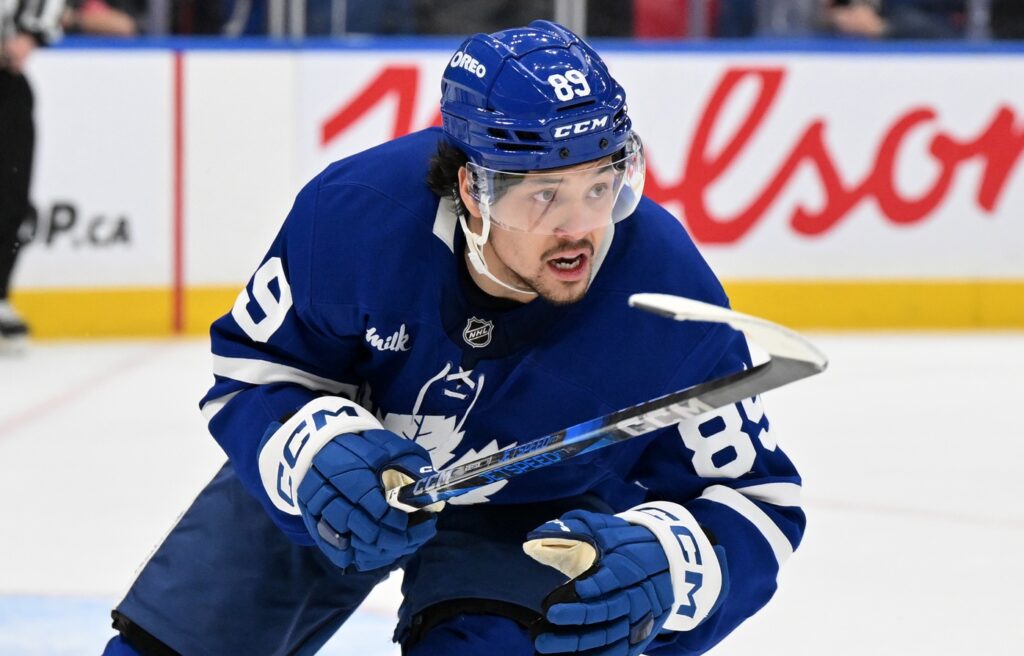For years, Nicholas Robertson has been the Toronto Maple Leafs’ tantalizing ‘what if’. A second-round pick who exploded in his final year of junior, scoring goals at a torrid pace and promising a future of dynamic, top-six offence. He possesses a shot that’s undeniably NHL-caliber—quick, deceptive,rainand lethal. Yet, as we head into the 2025-26 season, the ‘what if’ has soured into ‘what now?’. The runway has gotten shorter, the cockpit is crowded, and the flight plan has been completely rewritten. For Robertson, the future in blue and white looks less like a promise and more like a dead end. The writing isn’t just on the wall; it’s been etched in stone by a new coaching philosophy, a roster overhaul, and a fundamental lack of trust when it matters most. A trade isn’t just a possibility; it feels like an inevitability.
A Square Peg in Berube’s Round Hole
If you want to understand why Robertson is on the outside looking in, you start and end with Head Coach Craig Berube. Berube Hockey is a brand, a philosophy built on structure, relentless puck pursuit, defensive accountability, and grinding out victories in the hard areas of the ice. It’s about winning the war of attrition, not just the skills competition. Berube himself has been blunt: Robertson will not be handed a role. Training camp will be a crucible, and spots will be earned, not given.

This philosophy is antithetical to Robertson’s game. His calling card is speed, transition, and a shoot-first mentality. While thrilling in flashes, it often comes at the expense of defensive positioning and puck management. Under Berube, this freelance style is a cardinal sin. The coach has already shown his hand. Last season, Robertson saw his minutes curtailed and was relegated to a spectator for all but three of the Leafs’ 13 playoff games, serving as a healthy scratch. That’s not a subtle hint; it’s a flashing neon sign that reads, “I don’t trust you.” For a coach like Berube, who values reliability over raw skill, Robertson represents a high-variance asset in a system that demands consistency. The analytics back up this friction. His expected goals-for percentage (xGF%) sits below 50%, a clear indicator that when he’s on the ice, the opposition is generating more quality chances. Furthermore, his low high-danger chance share suggests his impressive shot is often deployed from the perimeter rather than from the greasy areas Berube’s system is designed to dominate. He’s a square peg, and Berube is building a team of perfectly round holes.
Drowning in Depth: The Bottom-Six Logjam
While the philosophical mismatch is damning, the sheer numbers on the roster sheet might be even more so. General Manager Brad Treliving has been a man on a mission, methodically transforming the Leafs’ bottom-six from an afterthought into a legitimate strength. The off-season acquisitions read like a death knell for Robertson’s chances. Mattias Maccelli brings skill, Nicolas Roy brings a proven, championship-caliber two-way game, and Dakota Joshua and Michael Pezzetta bring the size, snarl, and physicality the organization has craved for years.
Treliving didn’t just add bodies; he added specific tools that Robertson doesn’t possess. The explicit goal was to build a third line that could not only hold its own but drive play, and the duo of Roy and Joshua seems purpose-built for that role under Berube. When you add these new faces to an already crowded group featuring Bobby McMann, Scott Laughton, Steven Lorentz, Calle Järnkrok, and David Kämpf, you arrive at what can only be described as a glut. The Leafs are carrying 14 NHL-ready forwards, and that’s before you even factor in the meteoric rise of top prospect Easton Cowan, who looks more than ready to push for a spot. In this game of musical chairs, Robertson is the one left standing without a seat. He simply doesn’t fit the archetype Treliving has prioritized, making him the most logical and expendable piece in a newly constructed puzzle.
When Brilliance Isn’t Enough
The frustrating part of the Robertson saga is that the talent is clearly there. He potted 15 goals and 22 points in 69 games last season, a pace that prorates to a respectable 18-20 goals over a full 82-game campaign. For a bottom-six winger, that’s solid production. But in Toronto, under this new regime, regular-season point totals are secondary to playoff viability. Being a healthy scratch in the postseason is the ultimate indictment of a player’s value to the coaching staff. It communicates that, when the chips were down and every shift mattered, the team felt they had a better chance to win with him in the press box.

This isn’t a new issue. Throughout his tenure, Robertson has struggled to consistently translate his offensive gifts into the all-around game required to earn the unwavering trust of his coaches, first Sheldon Keefe and now, more pointedly, Craig Berube. The flashes of brilliance are consistently overshadowed by the moments of defensive indifference or a poor decision with the puck. For a team desperate to shed its reputation for playoff fragility, banking on a player who hasn’t earned that trust is a non-starter.
The Inevitable Transaction
The final nails in the coffin are the contractual and historical precedents. Robertson’s camp narrowly avoided arbitration this summer, settling on a one-year, $1.825 million contract. The deal itself is telling. His team was asking for $2.25 million, while the Leafs countered at $1.2 million. Meeting in the middle on a one-year term screams “bridge deal,” but it feels less like a bridge to a long-term future in Toronto and more like a platform to showcase him for a trade.
Prominent insiders are already connecting the dots. Jonas Siegel has bluntly stated his expectation that the Leafs will shop Robertson, seeing no clear path to playing time for him. Chris Johnston has echoed this sentiment, suggesting a move could easily materialize during training camp as other teams around the league look to finalize their own rosters. We’ve seen this movie before. First-rounder Timothy Liljegren found himself in a similar purgatory of contract squabbles and inconsistent playing time before being dealt early in the season. The parallels are impossible to ignore.
A trade makes too much sense for both parties. For the Maple Leafs, it clears a contract spot, provides a modicum of cap relief, and allows them to recoup an asset—be it a draft pick or a prospect—for a player who no longer fits their organizational direction. For Robertson, it’s a lifeline. It’s a chance for a fresh start in a new city, on a team that might have a spot for him in the top-nine and on a power-play unit where his shot can be properly weaponized. He needs a coach who is willing to live with the defensive lapses in exchange for the offensive upside. That coach is not Craig Berube.
The clock has been ticking on Robertson’s time in Toronto for a while now, but with the arrival of a new coach and a new wave of forwards, the final seconds are draining away. The potential remains, but the opportunity, at least with the Maple Leafs, has all but vanished.
Created with the aid of Gemini AI
